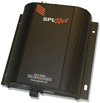|
SPLnet
Model 100 and Model 112 Feature-by-Feature Comparison
Chart
To find out which
SPLnet System
is right for your application, review the comparison
chart below.
|
|
Model 100
 |
Model 112
 |
|
PoE Powered |
• |
|
|
DC Powered (10-18 Volt DC) |
|
• |
|
Integrated LED Array |
• |
|
|
Programmable Contact Closure |
• |
• |
|
A, C, and Z Weighting |
• |
• |
|
1/1- and 1/3-Octave Analysis |
Optional |
Standard |
|
Analog Audio Output |
• |
• |
|
Extended Dynamic Range |
|
• |
|
10/100 Ethernet |
• |
• |
|
Constant Current Microphone Input |
• |
• |
|
SNMP Accessible/SNMP Traps |
• |
• |
|
IEC 61672 SPL Meter Compliance |
• |
• |
|
IEC 1260 Frequency Band Compliance |
• |
• |
|
DIN 45657 Percentile Compliance |
• |
• |
|
Temperature/Humidity Sensing Capable |
Basic |
Advanced |
|
Wind Speed/Wind Direction Capable |
|
• |
|
Wall-Mount Enclosure |
• |
• |

 Model 100 and Model 112 Comparison Chart in PDF Format
Model 100 and Model 112 Comparison Chart in PDF Format |